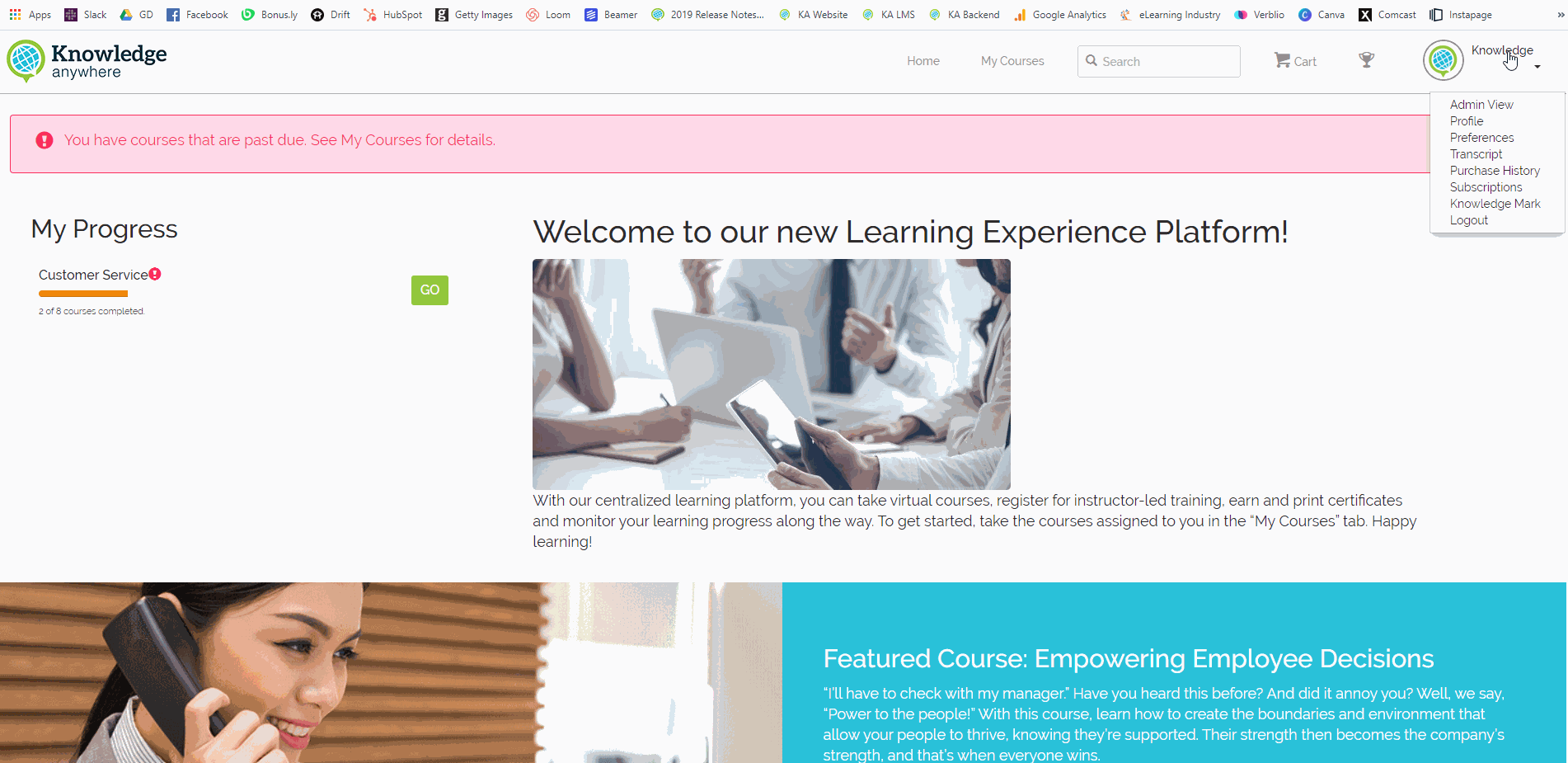Having an LMS is an important factor when it comes to your organization's success. However, as technology has continued to develop and become more efficient so has learning. One of the most important developments has been the method of "Learning in The Flow of Work." It's crucial to consider whether their LMS effectively integrates learning into the flow of work. If it doesn't, then it might be time to reassess the system's efficacy and explore alternatives.
Definition & Importance
In essence, learning in the flow of work means learners are able to extract information they need, when they need it, without having to interrupt their process. Ideally, this would mean learners could be on the job, learn a skill they need, use that skill quickly, and then move on to their work as before. This involves microlearning, which allows learning in multiple, short forms, improving memory and employee engagement. Instead of formally training workers for hours in a lecture hall, learning in the flow of work uses design and strategy to meet learners where they are in a digital platform.
By feeding employees information naturally throughout the workday when they need it or have time, this process has the potential to increase efficiency, and cut down on time, while shrinking the skills gap.
When an LMS doesn't implement "Learning in the Flow of Work" it creates some major pitfalls for employees. These weaknesses include:
Lack of Context: When learning is disconnected from the actual work environment, employees struggle to apply their newly acquired knowledge to real-life situations. Without contextual relevance, the information learned becomes less meaningful and quickly forgotten.
Time Constraints: Requiring employees to dedicate separate chunks of time for learning can be challenging, especially when they have demanding workloads. It often leads to delays in completing courses or even skipping them altogether, resulting in missed learning opportunities.
Limited Engagement: Isolated learning experiences can lack the interactive and engaging elements that facilitate knowledge retention. Employees are more likely to disengage from the training process when it feels detached from their daily tasks.
Lack of Reinforcement: Without integration into the workflow, it is difficult to reinforce learning concepts and encourage continuous improvement. Repetition and application of learned skills are crucial for long-term retention and mastery.
Over time these weaknesses add up and result in a workforce that doesn't have the sufficient skills needed to succeed. Poorly trained employees have 50% less output compared to their more efficiently trained counterparts (Association for Talent Development).
Real-World Examples
There are many ways organizations can practically utilize learning in the flow of work within Learning Management Systems (LMS). Be on the lookout for these features:
Recommended Resources Based on Your Past Behaviors
Algothrimn-based recommendations are utilized by companies like Netflix, YouTube, Amazon, Spotify, and many others. By providing choices based on relevant behavior, companies can add value to their customers by effectively anticipating their needs. So how does this work in the world of eLearning? Say you're in an LMS and have taken three safety training courses, along with a compliance course a few years ago. Based on just this information, the system could be able to provide "Recommended Courses," which could include a certification or badge based on safety training and an ethics course reminder, to re-up the old one. This would allow a learner to continue learning, without having had to navigate or search for courses that could potentially apply to them.
Chatboxes, Feedback, and Contacts
Let's say I am doing research on a company as a part of a larger project. Instead of filtering through multiple website pages, chatbots, and messaging boards provide a quick way for me to talk with someone about specific questions, instead of doing all of the work alone. Allow for many different, clear ways for people to make contact with your organization. Not only will this help them in their journey, but it will also allow you to show off your customer service skills and provide real feedback as to what people want.
Make Content Easily Accessible
This may seem like a no-brainer, but if learners cannot find helpful resources, they can't use them easily and quickly. Make sure blogs and articles are tagged and try to have a clear layout, filters, or search functionality bar that will help people get to where they want to go.
Knowledge Mark xAPI
Knowledge Anywhere has created a tool designed to promote learning in the flow of work. With Knowledge Mark, users can now put any external site info into their transcripts - simply drag and drop into your bookmarks, find the external site you wish to upload, and click the Knowledge Mark bookmark! It will automatically download in the user's LMS. This allows learners to track content accessed outside of the LMS, and integrate it seamlessly, without having to navigate off the page or switch browsers.

Conclusion
The integration of learning in the flow of work is crucial for maximizing the effectiveness and value of any Learning Management System (LMS). Failing to utilize this approach not only results in a wasted investment but also hampers the overall learning experience for individuals and organizations.
If your training program or LMS isn't learning in the flow of work contact us at Knowledge Anywhere. To schedule a free consultation with a training expert, click here!
Similar Posts
Learn how you put education at the center of your organization with these great articles and resources.




